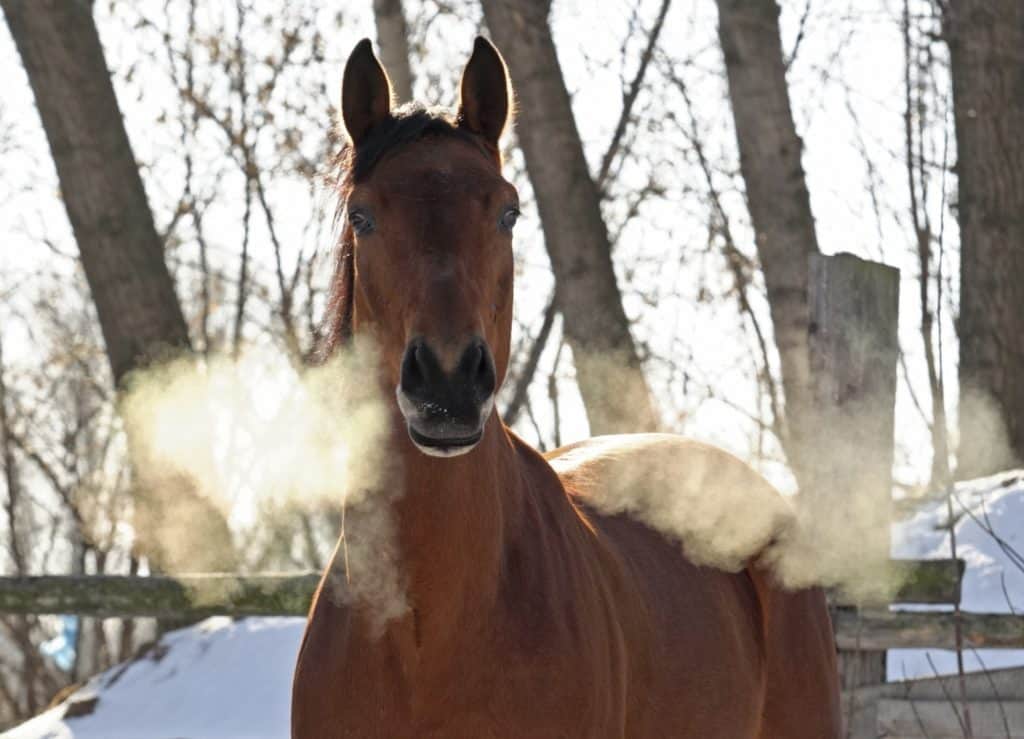
EIT Offers Easy On-Site, Drug-Free Testing for Equine Asthma
Electrical impedance tomography could be simple enough for veterinarians to use in the field to diagnose asthmatic horses without anesthetics or an assistant.

Electrical impedance tomography could be simple enough for veterinarians to use in the field to diagnose asthmatic horses without anesthetics or an assistant.

The choice to use antimicrobials to treat lower airway issues in horses isn’t always clear.

Critical care specialist: With little time to act, veterinarians called upon to help horses struggling to breathe must arrive organized, prepared, and confident.

You expect dusty hay to set off inflammation in asthmatic horses’ lungs. But did you know dusty hay and indoor housing can also affect their gut microbiota?

Exercise-induced pulmonary hemorrhage is a condition in which horses experience lung bleeding during exercise. Veterinarians and researchers continue to investigate the condition.

Find out how to prevent equine upper respiratory tract infections from spreading throughout your barn.

Does your horse have asthma? Find out how you can help him using management and environmental changes.

Sweet PDZ Horse Stall Refresher and The Horse have partnered for Respiratory Health Awareness Week, held Oct. 26-Nov. 1.

An Oregon-based sports medicine practice offers advice for horse owners dealing with hazardous and unhealthy air quality.

Acute respiratory distress syndrome (ARDS) causes rapidly progressive and severe respiratory failure and is associated with high mortality in affected patients.

Have you walked into a barn and smelled a pungent, burning odor? That’s ammonia, and it’s hurting your horse.

A horse’s active competition schedule can make managing and treating respiratory problems challenging.

Here’s how to manage senior horses’ aging teeth, joints, lungs, and more.

Veterinarians often prescribe medications to control acute and chronic clinical signs of disease, along with recommending environmental changes to limit asthmatic horses’ exposure to inhaled allergens. What do owners think of these sometimes time-consuming and expensive suggestions?

The ongoing Equine Respiratory Biosurveillance Program revealed new information on infectious respiratory disease threats, including EHV-1 and EHV-4, influenza, S. equi, equine rhinitis A/B viruses, and more. Here’s what you should know.

Researchers identified upper respiratory tract disorders, many of which aren’t common in other horse types, in 92% of the competition draft horses they examined.
Stay on top of the most recent Horse Health news with
"*" indicates required fields